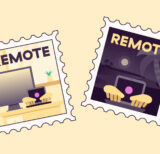The 10 Best Employee Monitoring Software for Non-Invasive Tracking (2025)
25 min read
Here are our top articles starting from the basics.

In the beginning, there was an…office. It is 2014...

Communication is a big challenge for remote teams. Learn...

Looking for tips on how to manage freelancers? Learn...

Project planning can be challenging for teams that work...